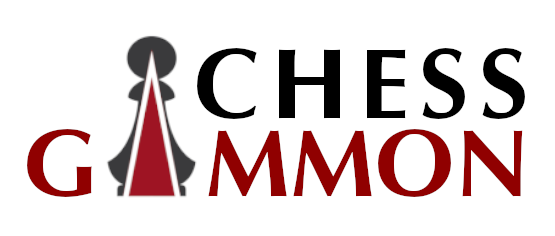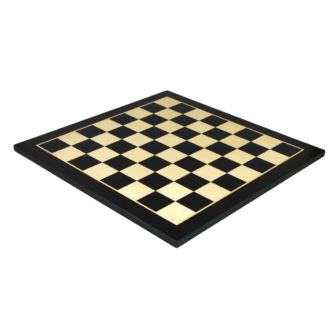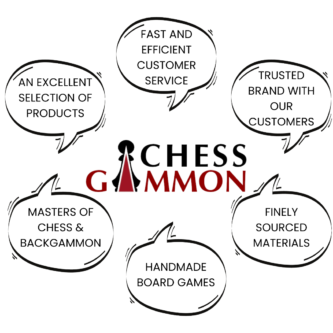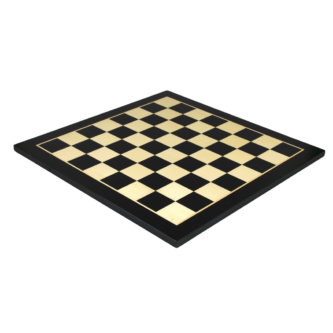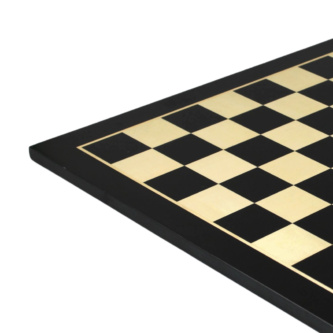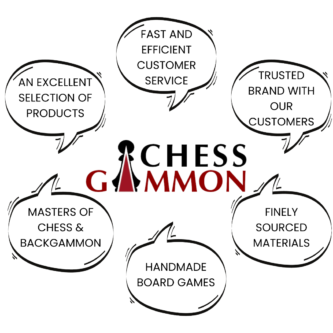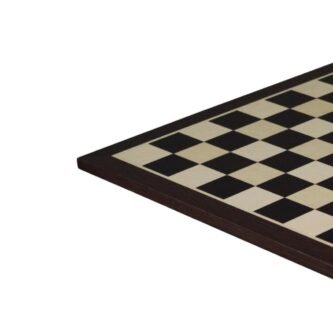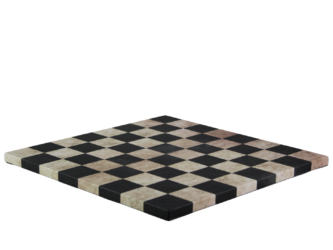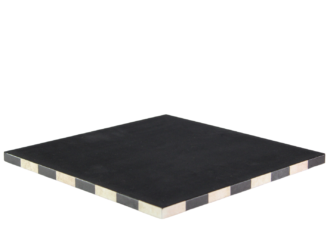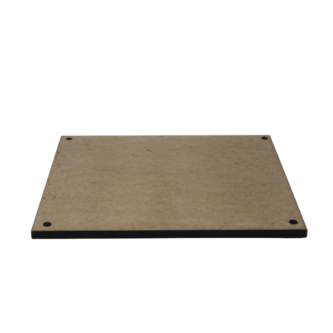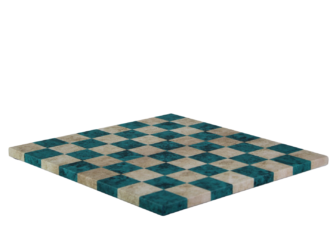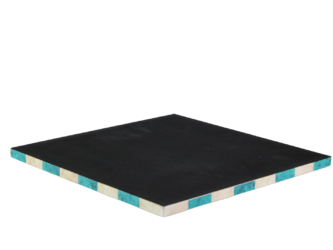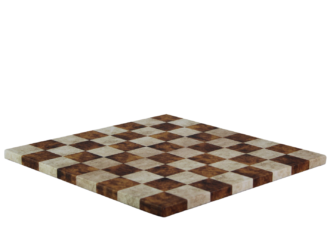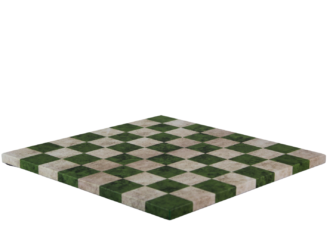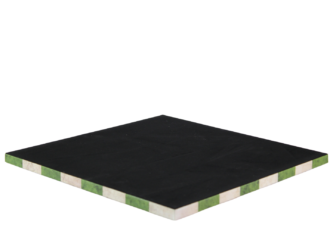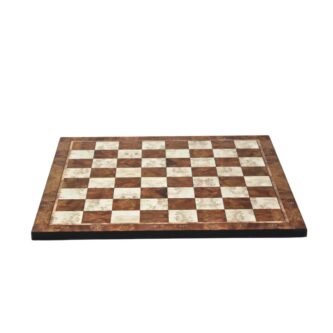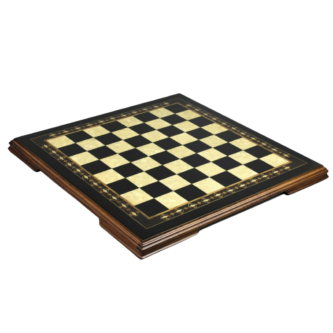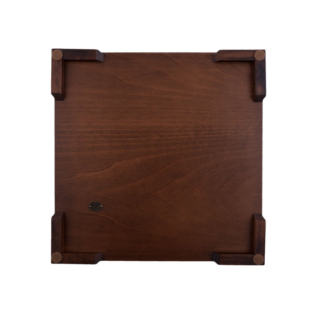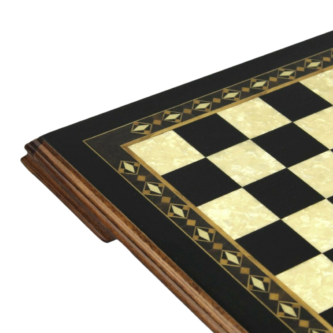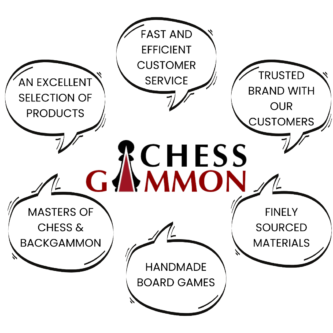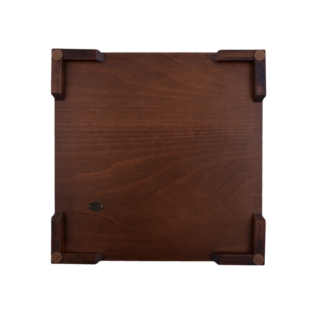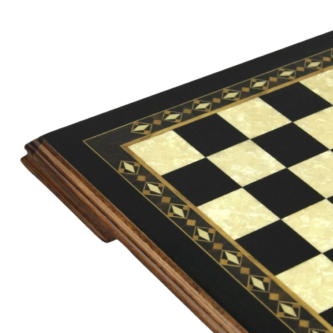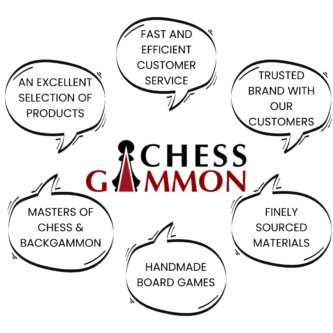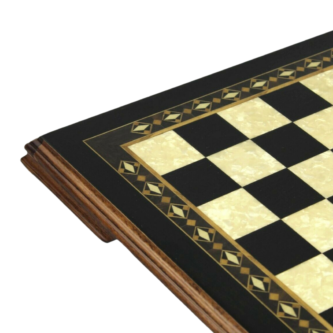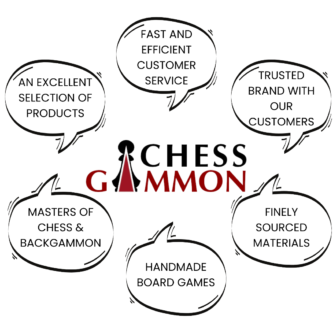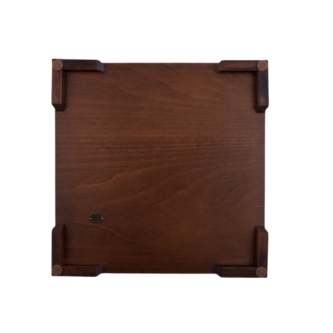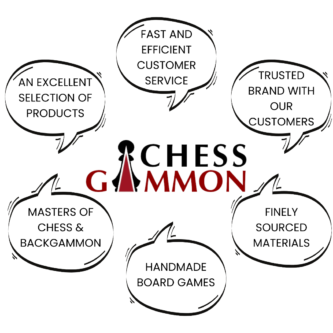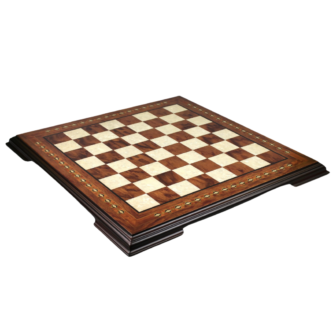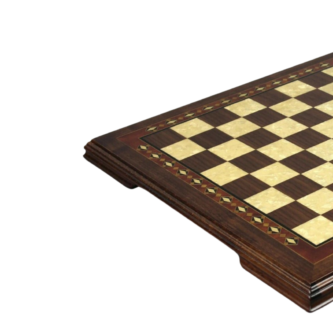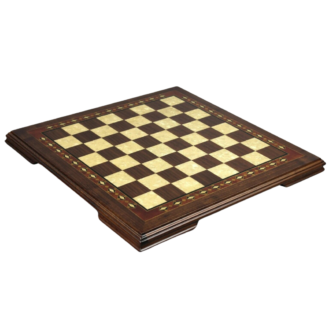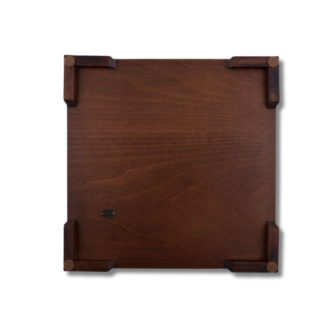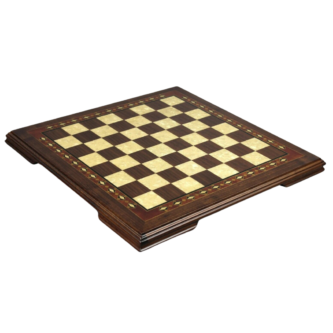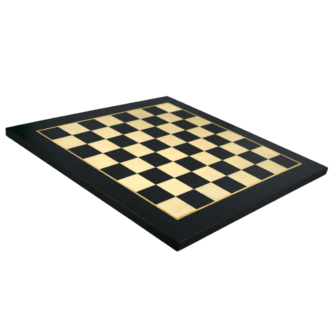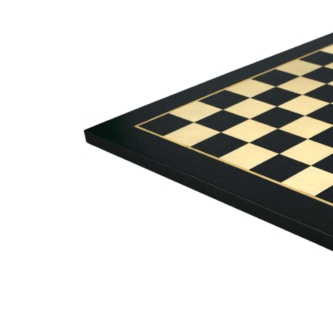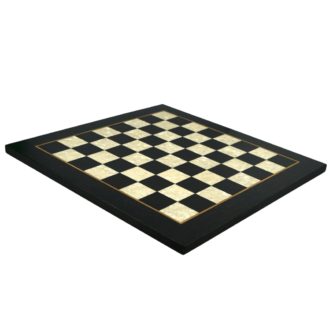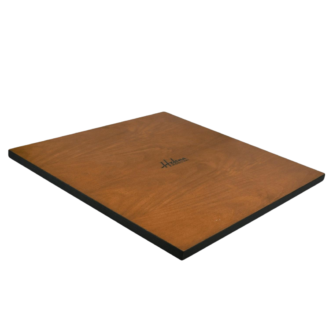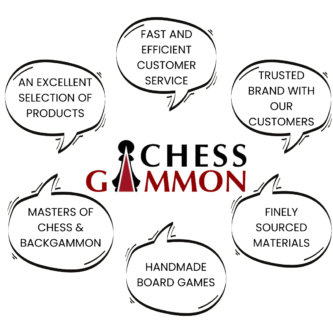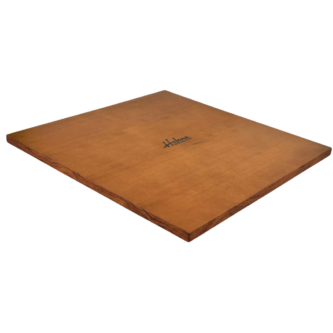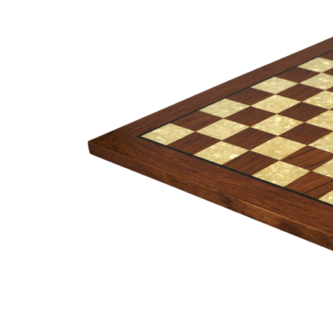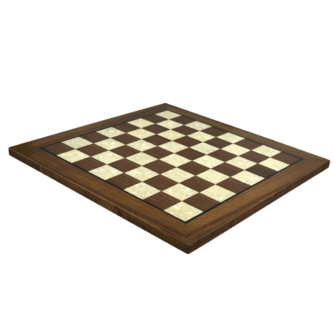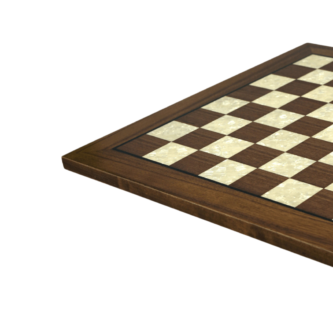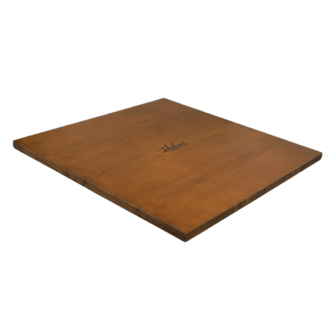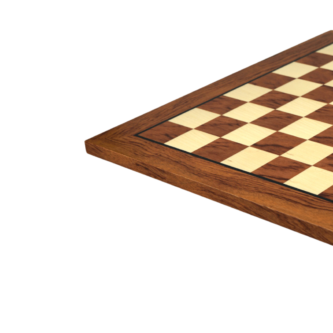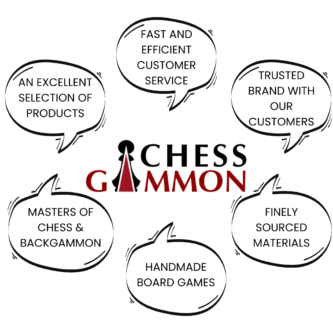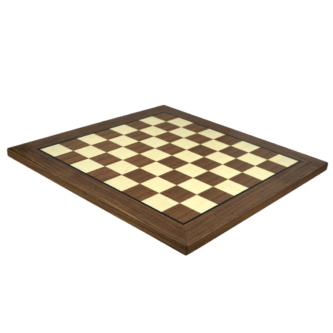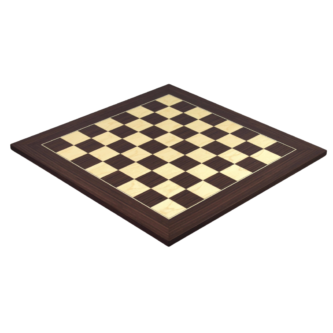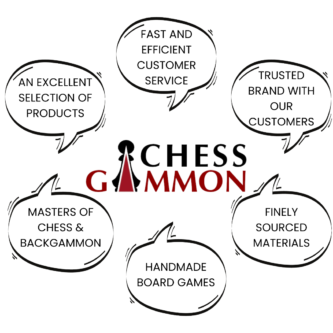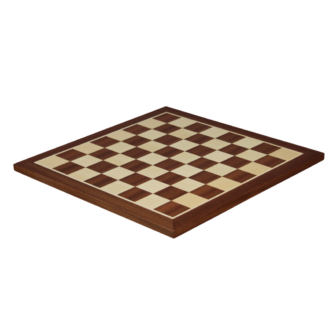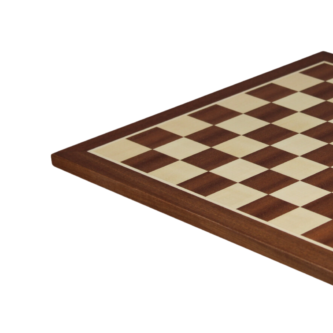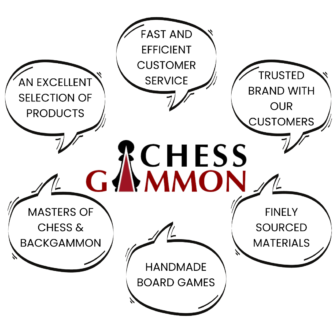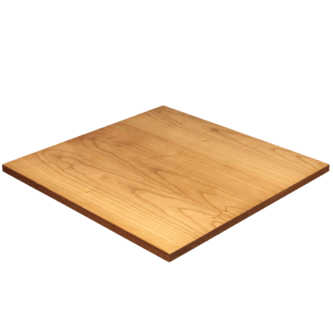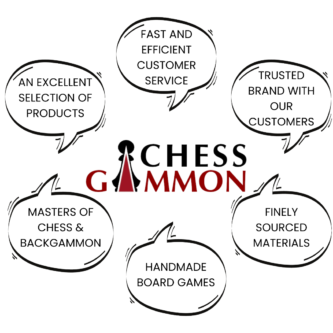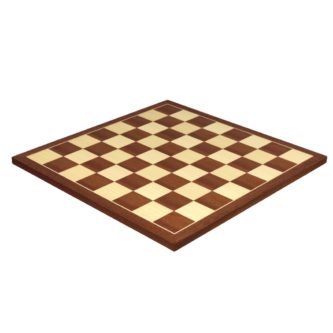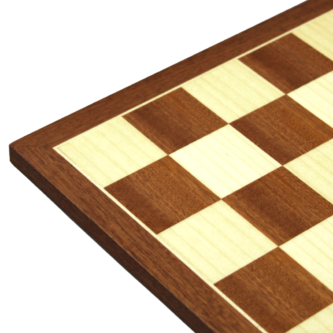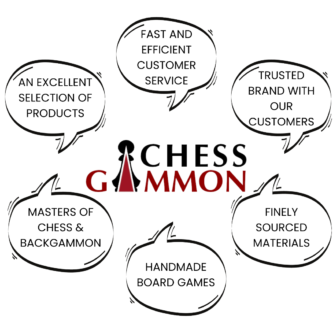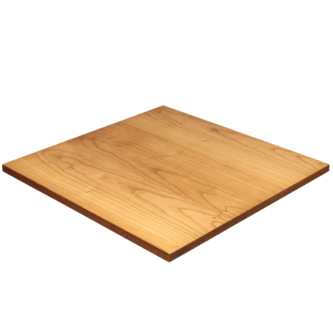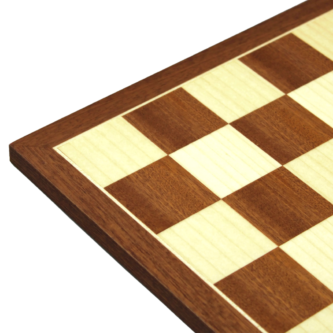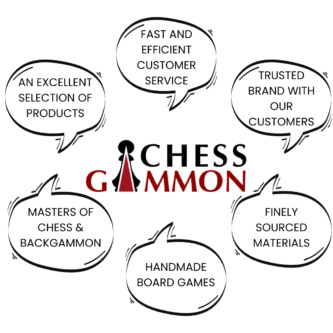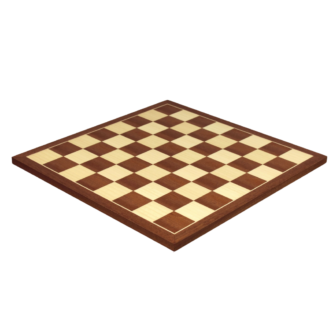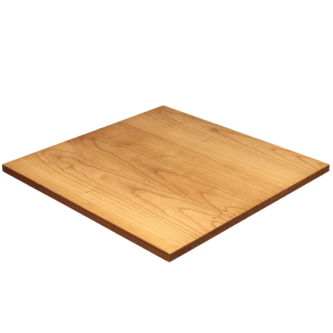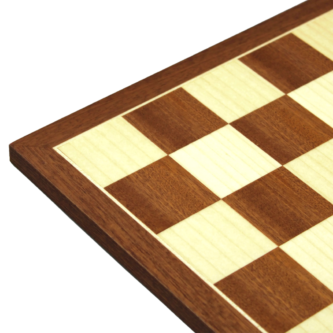Chess Board
End of content
No more pages to load
Chess Board
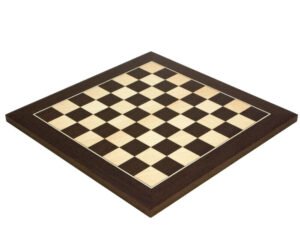
Chess, a timeless game that has captivated minds for centuries, is more than just a pastime; it’s a realm of strategy, intellect, and unending fascination. A battle of wits played out on a square battleground, chess challenges players to anticipate their opponent’s moves, plan their strategies meticulously, and execute their plans with precision. Beyond the intricacies of its pieces and rules lies a fundamental element that serves as the canvas for this cerebral contest: the chess board.
At first glance, the chess board might appear as a simple arrangement of 64 squares, alternating in contrasting hues. Yet, upon closer inspection, it unveils its true significance as the cornerstone of the game. Much like a map to a navigator or a canvas to an artist, the chess board provides the platform upon which the symphony of tactics and manoeuvres is composed.
Without the chess board, the pieces would lack direction, purpose, and context. It is on this checkered battlefield that knights gallop, bishops diagonally traverse, rooks tower with authority, and queens reign with strategic prowess. Each square holds the promise of countless possibilities, while the grid pattern provides the structure necessary for order and understanding amidst the chaos of battle.
The chess board is more than just a physical object; it is the bridge that connects players’ minds, the arena where battles of strategy and imagination unfold. Its role in gameplay extends beyond mere functionality; it is a visual representation of the mental landscape in which players navigate, adapt, and outmanoeuvre their opponents. Every move is a brushstroke on this intricate canvas, contributing to the grand tapestry of a match that challenges players to outthink, outwit, and outplay their counterparts.
In the realm of chess, the chess board is the nucleus from which brilliance emerges. It sets the stage for the symphony of thought, the dance of tactics, and the ballet of strategy. As players contemplate their moves, evaluate their options, and seek to predict their adversary’s intentions, they do so within the confines of this gridded terrain that is both their playground and battlefield.
In the following sections, we will delve deeper into the captivating world of chess boards, exploring their dimensions, materials, and the role they play in competitive tournaments. From the arrangement of pieces to the notation that records every move, the chess board remains an enduring symbol of intellectual challenge, strategic mastery, and the indomitable human spirit of competition.
The 16 Chess Pieces: Names and Roles
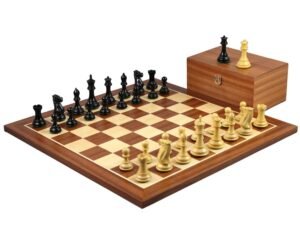
In the intricate dance of chess, the battlefield is populated by an ensemble of 16 unique characters, each possessing its own distinctive movements, strategic potential, and role in the unfolding drama. From knights to kings, bishops to pawns, the chess pieces are the protagonists in a symphony of strategy and tactics. Let’s explore the names and roles of these intriguing characters that populate the chess board.
- King: The monarch of the chess kingdom, the king’s safety is paramount. It moves one square in any direction and holds the key to the game’s ultimate objective: checkmate.
- Queen: Often referred to as the game’s powerhouse, the queen combines the movements of a rook and a bishop. It commands a vast expanse of the board, making it a versatile and lethal force.
- Rook: These fortress-like pieces move horizontally or vertically, in straight lines. Their ability to control open files and ranks makes them valuable for controlling the board’s centre and supporting each other.
- Knight: The enigmatic knights move in an L-shape, making them the only pieces capable of “jumping” over others. This unique movement confounds opponents and enables them to access strategic positions.
- Bishop: The bishops move diagonally across the board, remaining on their original colour square throughout the game. They’re excellent at controlling long diagonals and can work together to dominate the board.
- Pawn: The foot soldiers of the chess world, pawns move forward one square but capture diagonally. They have a special double-move option from their starting position and can promote to any other piece upon reaching the opponent’s back rank.
With these six types of pieces, the symphony of chess begins. But this diversity doesn’t end there. Each side starts with eight pawns, creating a formidable frontline that can influence the board’s centre and initiate tactical exchanges. As pawns advance, they can shape the flow of the game and pave the way for their more powerful counterparts.
It’s the interaction of these diverse pieces that makes chess a game of infinite possibilities. Each move is a strategic decision, a step closer to victory or defeat. As players navigate the intricacies of movement, they must think not only about their own position but also anticipate their opponent’s responses.
Understanding the unique movements and strategic values of these 16 chess pieces is essential for effective gameplay. The symphony they create on the chess board showcases the beauty of strategy, the thrill of tactics, and the inexhaustible depth of a game that has captured the hearts and minds of players for generations.
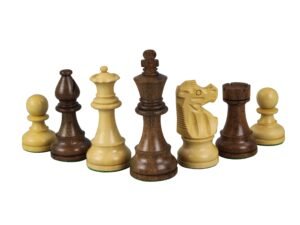
Decoding Chess Board Prices: Why Are They Expensive?
A chess board, seemingly a simple grid of squares, can manifest itself in a range of prices that might leave one pondering the reasons behind such disparity. While some chess boards can be found at modest prices, others carry a weighty price tag that seems to defy their apparent simplicity. The truth lies in the intricate interplay of factors that contribute to the cost of a chess board, unveiling a world of craftsmanship, materials, and design that goes beyond the surface.
- Materials Speak Volumes:
One of the most significant determinants of a chess board’s cost lies in the materials used. Exquisite woods such as rosewood, ebony, and maple are often employed to create luxurious playing surfaces that not only exude elegance but also enhance the tactile experience of the game. Rarer and higher-quality woods drive up the cost due to their limited availability and aesthetic appeal. - Craftsmanship: Where Art Meets Function:
Craftsmanship plays a pivotal role in elevating a chess board’s cost. Meticulous attention to detail, precision in construction, and impeccable finishing can transform a chess board into a work of art. Master artisans invest hours in meticulously handcrafting each square, ensuring seamless joints, smooth surfaces, and intricate inlays. The craftsmanship not only enhances the board’s aesthetics but also contributes to its durability, making it a worthy investment. - Design: Beyond the Basics:
Chess boards come in a spectrum of designs, from classic and minimalist to ornate and intricately detailed. Boards with artistic inlays, intricate patterns, and unique colour combinations can fetch higher prices due to the additional effort and expertise required in their creation. Design also encompasses the size of the squares, the type of wood used for borders, and the presence of storage compartments, all of which contribute to the overall aesthetic and utility of the board. - Range of Options: From Budget to Luxe:
Chess boards cater to a diverse audience, resulting in a wide range of options to suit various preferences and budgets. For those seeking a budget-friendly option, chess boards made from less expensive woods or synthetic materials provide a cost-effective solution for enjoying the game. On the other end of the spectrum, collectors and connoisseurs might invest in high-end boards that boast not only exceptional materials and craftsmanship but also rarity and historical significance. - Collector’s Delight: Rarity and Heritage:
In the world of chess, some boards transcend the realm of mere gaming equipment and become artefacts of history. Antique chess boards, crafted with timeless techniques and bearing the marks of a bygone era, can carry astronomical prices due to their rarity and historical value. Collectors are willing to pay a premium for a piece of history that connects them to the heritage of the game.
In the intricate dance of factors that determine a chess board’s cost, the true value often transcends the price tag. Each board carries a story of the hands that shaped it, the materials that breathe life into it, and the passion that fuels its creation. Whether you’re drawn to the allure of fine craftsmanship or find satisfaction in budget-conscious choices, the diverse world of chess boards offers something for every player, collector, and enthusiast.
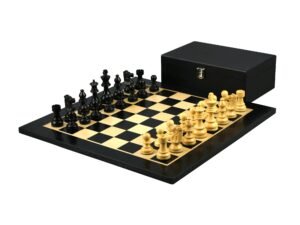
Choosing the Perfect Chess Board: Factors to Consider
Selecting a chess board isn’t merely a matter of aesthetics; it’s a decision that shapes your entire chess experience. Whether you’re a casual player, an aspiring grandmaster, or a collector of fine chess sets, several key factors come into play when choosing the perfect chess board. From materials to size, style to budget, here’s a guide to help you make an informed decision that aligns with your preferences and needs.
- Material Matters:
The choice of material significantly impacts the board’s appearance, durability, and tactile feel. Wooden boards offer a classic charm, with options ranging from budget-friendly woods to luxurious hardwoods like ebony and rosewood. If you’re seeking durability and affordability, consider options like vinyl, leather, or synthetic materials. - Size and Square Dimensions:
Chess boards come in various sizes, with tournament standard boards usually measuring 20 inches by 20 inches. The size of the squares is equally important; standard tournament squares are 2.25 inches. Smaller boards are portable and great for casual play, while larger boards provide better visibility for detailed analysis. - Style and Aesthetics:
Chess boards encompass a spectrum of styles, from traditional to contemporary, minimalist to ornate. Consider your personal taste and the environment in which you’ll play. Intricate inlays, unique wood patterns, and colour schemes can add a touch of elegance to your game. - Playing Style and Pieces:
Your playing style might influence the type of board you prefer. If you enjoy fast-paced, aggressive games, a larger board might accommodate your tactical manoeuvres. Players who prefer strategic, positional play might opt for a standard-sized board that allows for deeper analysis. - Budget Considerations:
Chess boards span a wide price range, catering to different budgets. While premium materials and craftsmanship come at a cost, there are also affordable options that deliver excellent quality for recreational play. Define your budget and prioritize features that matter most to you. - Portability and Storage:
Consider whether you’ll be playing at home, in clubs, or on the go. Travel-friendly boards with foldable designs and storage compartments are ideal for players who want to take their game anywhere. For collectors, a board’s display value might also be a consideration. - Maintenance and Care:
Different materials require varying levels of maintenance. Wooden boards might need occasional polishing and protection from moisture, while vinyl or leather boards are easier to clean. Factor in how much effort you’re willing to invest in upkeep. - Personal Connection:
Lastly, let your heart guide you. A chess board isn’t just a utilitarian item; it’s a companion on your chess journey. Choose a board that resonates with you, whether it’s due to its craftsmanship, history, or personal sentiment.
Ultimately, the perfect chess board is the one that enhances your enjoyment of the game, aligns with your preferences, and reflects your unique style. Whether you’re drawn to the allure of fine materials, the thrill of competition, or the joy of sharing a game with friends and family, your choice of chess board will undoubtedly shape countless memorable moments.
Understanding the Chess Board: Its Role and Importance
In the realm of chess, the chess board is not merely a static arrangement of squares; it is the dynamic stage upon which the symphony of strategy and tactics is composed. This unassuming grid serves as the battleground where minds collide, plans unfold, and manoeuvres are executed. The significance of the chess board goes beyond its physical presence; it is the canvas upon which players paint their strategic narratives.
- A Battlefield of Minds:
Imagine the chess board as a battlefield, where each square represents a strategic position and every piece is a potential soldier. As players engage in this cerebral warfare, they navigate the terrain with an ever-watchful eye, seeking advantages and anticipating threats. The positioning of pieces on the board takes on profound meaning, as it determines their potential to influence the course of the game. The chess board becomes a landscape where kings hide behind protective walls, knights embark on daring charges, and pawns advance to claim territory. Every move on this battlefield is a calculated step in a larger campaign, with the ultimate objective of putting the opponent’s king in checkmate. - The Grid of Fair Play:
The chess board’s grid pattern plays a pivotal role in maintaining the game’s integrity. Its alternating colours of light and dark squares ensure an even playing field for both players, preventing any unfair advantage based on starting positions. This pattern creates a balanced distribution of spaces for all pieces, promoting equal opportunities for strategic manoeuvres. The grid’s uniformity serves as a silent arbiter of justice, ensuring that no one benefits unfairly from the initial setup.
Beyond its visual appeal, the grid pattern also contributes to efficient notation, allowing players to record and communicate moves with precision. Algebraic notation, based on the grid’s rows and columns, has become the universal language of chess, enabling players around the world to communicate complex sequences of moves with clarity.
A Metaphor for Life’s Challenges:
The chess board is often likened to a microcosm of life’s challenges. Just as in life, the choices made on the chess board have consequences that ripple through the game. Every decision reflects a trade-off, a sacrifice, or a calculated risk. The chess board mirrors the strategic decision-making processes that individuals face daily, encouraging critical thinking, adaptability, and foresight.
In the realm of chess, the chess board is the heart of the game—a platform that transcends its physicality to become a stage for intellectual exploration. As players manipulate their pieces, they create narratives of conflict, strategy, and triumph. The chess board is a testament to the power of the mind, the beauty of strategy, and the enduring allure of a game that challenges, captivates, and inspires.
Chess and Cognitive Benefits: A Workout for the Mind
Chess, often dubbed the “game of kings,” isn’t just a battle on the board; it’s also a workout for the mind. Beyond the tactical moves and strategic planning, this centuries-old game offers a wealth of cognitive benefits that extend far beyond the confines of the checkered battlefield.
- Enhanced Cognitive Skills:
Playing chess engages various cognitive functions, giving your brain a thorough exercise. As you contemplate moves and counter-moves, your brain is constantly processing information, analysing patterns, and making predictions. This mental gymnastics bolsters your memory, concentration, and attention to detail. The constant evaluation of multiple possibilities hones your ability to process complex information in real time. - Critical Thinking in Action:
Chess is the embodiment of critical thinking, forcing you to weigh pros and cons, anticipate consequences, and make informed decisions. Every move involves evaluating risks and rewards, considering both immediate and long-term outcomes. This thought process encourages strategic thinking, where you must visualize the unfolding positions several moves ahead. Such mental gymnastics refine your ability to assess situations, make calculated choices, and adapt to changing circumstances. - Problem-Solving Prowess:
In chess, every move poses a new challenge, demanding a swift response. The constant need to solve problems on the fly nurtures your problem-solving skills, enhancing your ability to find creative solutions when faced with unexpected obstacles. The diverse patterns and scenarios encountered on the chess board provide a microcosm for life’s myriad challenges, allowing you to develop a repertoire of analytical tools applicable to real-world situations. - Patience and Resilience:
Chess teaches patience like few other activities. Engaging in a battle that can span hours requires a long-term perspective and the capacity to endure setbacks without losing focus. Chess players learn the art of gracefully recovering from mistakes, maintaining their composure, and devising a new strategy despite setbacks—an invaluable life skill. - Strategic Planning and Forethought:
Chess demands an ability to create and execute a game plan while predicting your opponent’s moves. This dual-tasking encourages foresight, enabling you to set goals and devise a sequence of actions to achieve them. This skill extends well beyond the chess board, assisting in professional endeavours and long-term aspirations. - A Lifelong Learning Journey:
Chess is an ever-evolving game, with countless openings, tactics, and strategies waiting to be discovered. This ongoing learning process keeps your mind active, curiosity alive, and intellectual growth continuous. The pursuit of mastery encourages humility, the willingness to learn from both wins and losses, and a recognition that improvement is a lifelong journey.
In a world saturated with digital distractions, chess offers a sanctuary for mental engagement, stimulating the brain in ways that have lasting effects. The lessons learned on the chess board—strategic thinking, decision-making, patience, and adaptability—extend far beyond the game itself, enriching your cognitive toolkit and enhancing your ability to navigate life’s challenges with clarity and confidence.
The Challenge of Mastery: Why Chess Is Difficult to Master
Chess, a game that appears deceptively simple on the surface, holds within its 64 squares a labyrinth of complexity that beckons players into a lifelong pursuit of mastery. Beneath the elegant dance of pieces lies a world of strategy, tactics, and boundless possibilities that make achieving true mastery a formidable challenge.
- Endless Strategic Depth:
Chess is a game of nearly infinite strategic depth. Just as in life, no two games are the same. The sheer number of possible positions and moves means that even after studying numerous games, there are always new strategies and ideas waiting to be discovered. This richness of options ensures that mastery is a continuous exploration, as players delve deeper into the complexities of openings, middlegames, and endgames. - Dynamic and Ever-Changing:
The fluidity of chess is both its allure and its challenge. As players make moves, the game’s landscape transforms. A single move can alter the entire trajectory, introducing unforeseen complications and requiring quick adjustments. This dynamic nature demands not only foresight but also adaptability—a trait central to mastery. Anticipating an opponent’s response while being prepared to shift course when necessary is a delicate balancing act. - The Art of Psychological Warfare:
Beyond the mechanical aspects, chess is a psychological battleground. Mind games, bluffs, and feints play a significant role in high-level play. Understanding your opponent’s thought processes, exploiting their weaknesses, and maintaining your composure under pressure all contribute to mastery. The mental resilience required to outwit an adversary and remain composed in the face of adversity is a monumental challenge. - The Paradox of Simplicity and Complexity:
At its core, chess is a game of straightforward rules. Yet, the interactions of the pieces and the myriad possibilities they create bestow a level of complexity that defies simplicity. This paradox presents both novices and experienced players with a learning curve that remains steep even as their understanding deepens. It’s this balance between approachability and intricacy that makes the pursuit of mastery an endless journey. - A Lifelong Pursuit:
Chess’s nature as a never-ending puzzle is precisely what makes it so compelling. Mastery is not a destination but a journey, a constant evolution of skills, knowledge, and insights. Even the grandmasters, with their mastery of openings, tactics, and endgames, continue to learn, adapt, and refine their understanding. This humility in the face of the game’s complexity exemplifies the essence of chess: the quest to continuously improve, no matter how seasoned a player becomes.
In a world where instant gratification is often sought, chess stands as a testament to the value of patience, persistence, and the pursuit of knowledge. The challenge of mastery is a humbling reminder that growth is a perpetual process, and the journey is as enriching as the destination. As players navigate the labyrinth of chess’s complexities, they find not only a game but a mirror reflecting the complexities of life itself.
Chess and Brain Health: Can It Prevent Alzheimer’s?
In the realm of mind games, chess has garnered attention not only for its strategic challenges but also for its potential impact on brain health. As we age, concerns about cognitive decline, including conditions like Alzheimer’s disease, become more prominent. Could the game of kings hold the key to preserving our mental faculties? While the connection between chess and Alzheimer’s prevention is an intriguing avenue of exploration, it’s crucial to approach the topic with a balanced perspective, considering existing studies and the need for further research.
- The Cognitive Workout:
Chess is often described as a mental workout, demanding memory, concentration, problem-solving, and strategic thinking—all of which are essential cognitive skills. Engaging in activities that challenge the brain has been linked to improved cognitive function and a reduced risk of cognitive decline. Chess’s intricate gameplay might serve as an effective exercise regimen for keeping the mind agile and resilient. - The Role of Cognitive Stimulation:
Studies have shown that engaging in intellectually stimulating activities throughout life can potentially delay cognitive decline. Chess, with its requirement for constant learning, adapting, and planning, provides ongoing cognitive stimulation. Regular engagement in such activities might help create a cognitive reserve that could mitigate the impact of neurodegenerative diseases. - The Need for Further Research:
While there is growing interest in the potential benefits of chess for brain health, it’s essential to recognize that the available evidence is not definitive. While some studies suggest a positive correlation between chess play and cognitive improvement, causation has not been definitively established. Furthermore, other factors, such as genetics, lifestyle, and overall brain health, play a crucial role in Alzheimer’s risk. - The Complexity Factor:
Chess’s complex and strategic nature engages multiple regions of the brain, including those responsible for memory, problem-solving, and visual-spatial skills. The mental gymnastics required during gameplay could potentially strengthen neural connections and create cognitive resilience over time. - A Holistic Approach:
Promoting brain health extends beyond chess. Physical activity, a balanced diet, social interaction, and regular mental stimulation are all crucial components of a holistic approach to cognitive well-being. While chess might offer cognitive benefits, it should be part of a comprehensive lifestyle that nurtures brain health.
Conclusion: A Game for Mind and Soul:
While the relationship between chess and Alzheimer’s prevention is a fascinating area of study, it’s vital to approach it with tempered expectations. Engaging in intellectually stimulating activities like chess can be a valuable addition to a brain-healthy lifestyle, but it’s not a guaranteed safeguard against neurodegenerative diseases. As we await further research, one thing is clear: chess remains a remarkable game that challenges not only our intellect but also our spirit—a pursuit that enriches our lives, regardless of its role in Alzheimer’s prevention.
Tournament Standard Chess Board Size: Dimensions that Matter
In the realm of competitive chess, precision and uniformity are paramount. The tournament standard chess board emerges as the cornerstone of fair play and strategic battles. With official dimensions of 20 inches by 20 inches, this unassuming square battlefield holds a universe of calculated moves and intricate manoeuvres. Let’s delve into the significance of these dimensions and the 2.25-inch square size that fosters a consistent and level playing field.
A Game of Inches: The 2.25-Inch Square:
Within the 20-inch by 20-inch canvas, the 2.25-inch square emerges as a linchpin of consistency. This seemingly modest measurement has profound implications for gameplay. Each square accommodates a single piece, ensuring sufficient space for unhindered movement. This uniform square size maintains equilibrium between pieces, preventing any undue advantage for a particular playing style or strategy.
Importance of Standardisation: Fair Play and Universal Understanding:
Standardized board sizes serve as the bedrock of equitable competition. By establishing uniform dimensions, the playing field remains level, eliminating potential inequalities arising from varying equipment. Players from different backgrounds, accustomed to different boards, converge on a common ground—ensuring that the only factor influencing victory is skill.
Furthermore, the ease of transitioning between tournaments and venues is streamlined through standardized board sizes. Players can step onto any tournament stage, confident in their familiarity with the dimensions, layout, and nuances of the board, allowing them to focus solely on the battle of wits before them.
Materials and Design: Striking the Balance:
Tournament standard chess boards exhibit a harmonious balance between form and function. These boards come in various materials, each bearing its unique characteristics. Wood, with its classic appeal and tactile richness, is a favourite among players. Vinyl and leather offer durability and affordability, catering to a diverse array of preferences and budgets.
The design of these boards is equally significant. Clean lines and clear contrast between squares are paramount, ensuring optimal visibility and minimizing distractions. The design isn’t mere aesthetics—it’s an integral part of the player’s experience, enhancing concentration and elevating the chess encounter to a focused engagement of the mind.
Benefits of Using Tournament Standard Chess Boards:
The advantages of standardized boards ripple through the entire tapestry of competitive play. Familiarity with the board’s dimensions allows players to focus on the tactics and strategies at hand, unburdened by the need to acclimate to varying layouts. Fairness reigns supreme, as no player gains undue advantage based on the size or layout of their preferred board.
Moreover, the use of standardized boards elevates the atmosphere of tournaments. The professional environment is fostered by the consistent presentation, enabling players to immerse themselves fully in the intellectual arena.
In the intricate world of competitive chess, the tournament standard chess board stands as a beacon of fairness, consistency, and strategic potential. As players across the globe convene on these regulated squares, they’re united by the unwavering foundation of standardization—an embodiment of the true spirit of competition.
Algebraic Notation: Breaking Down the Basics
Chess, a game of intricate moves and strategies, comes alive through algebraic notation—a system that transforms the complexity of the board into a concise language. This notation method employs letters and numbers to decode the dance of pieces, allowing players to record and analyse games with precision.
Coordinates and Squares: Navigating the Chessboard
Letters from “a” to “h” denote the files (columns) on the board, while numbers from 1 to 8 represent the ranks (rows). The intersection of a letter and a number uniquely identifies each square on the board. For example, “e4” signifies the square where the white pawn starts.
Recording Moves: Capturing the Game’s Progression
Moves are recorded by stating the piece’s abbreviation followed by the destination square. For example, “Nf3” represents a knight moving to f3. If two identical pieces could move to the same square, the starting file or rank is indicated. “N1f3” signifies the knight from the first rank moving to f3.
Special Notations: En Passant, Castling, and Promotions
Special moves are also captured in algebraic notation. En passant captures are denoted by adding “e.p.” after the move, while castling is indicated as “0-0” for kingside and “0-0-0” for queenside. Promotions use an “=” symbol followed by the piece’s abbreviation, like “e8=Q” for promoting a pawn to a queen on e8.
Annotation Symbols: Adding Depth to the Notation
Annotations provide insight into move quality. “?” denotes a dubious move, “!” signifies a good move, and “!!” represents an outstanding move. These symbols allow players to highlight key moments and analyse game progression.
Chess Notation Devices: Scoresheets and Digital Tools
Scoresheets, commonly used during over-the-board play, capture each move sequentially. The notation can be reviewed during or after the game, aiding in post-game analysis. In the digital era, apps and software offer convenient ways to record, analyse, and share games electronically.
Understanding PGN: Portable Game Notation
PGN (Portable Game Notation) is a standardized file format that encapsulates an entire game’s moves, annotations, and other information. It enables players to share and archive games, facilitating learning and collaboration.
Benefits of Learning Chess Notations
Understanding algebraic notation unlocks a trove of advantages. It enhances game analysis by allowing players to review their own games and study master games. Clear communication and discussion about moves are facilitated, fostering a shared language among players. Lastly, delving into notations helps players grasp strategic concepts and patterns from historical games, leading to continuous improvement and mastery.
In the realm of chess, algebraic notation is the thread that weaves together moves, strategies, and history, transforming a simple board into a canvas of intricate possibilities.
